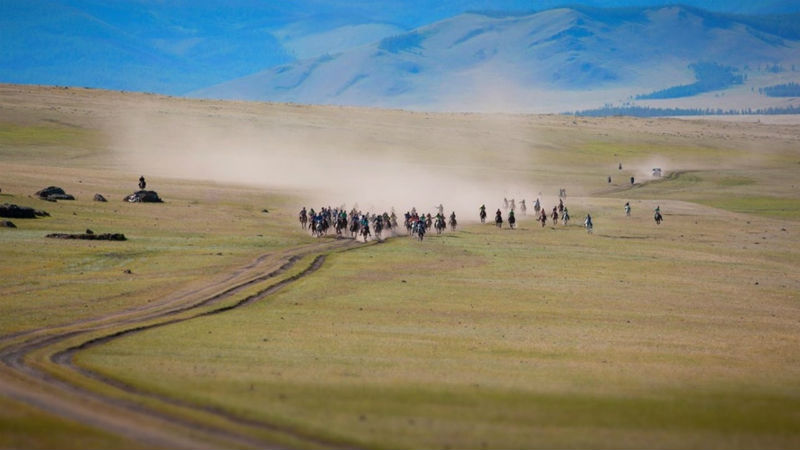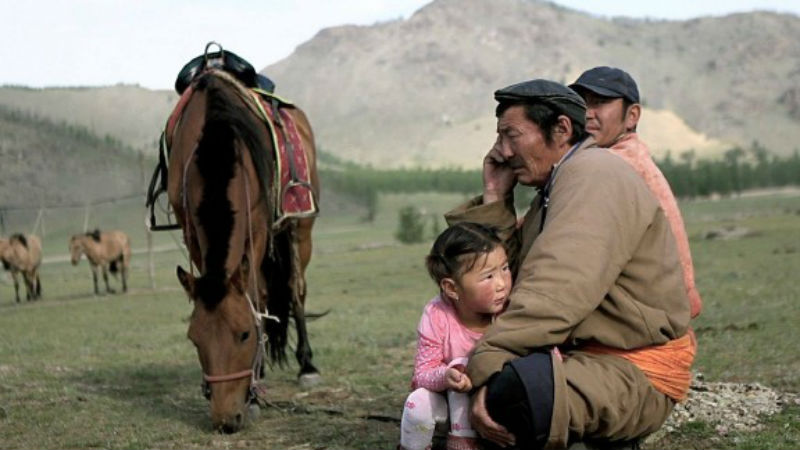West meets east quite literally in German-Mongolian production Black Milk, with its two characters named Wessi and Ossi. Wessi (Uisenma Borchu) lives in Germany, where she is in an abusive relationship with Franz (a very brief Franz Rogowski). Ossi (Gunsmaa Tsogzol) lives in the vast steppes of Mongolia in a yurt. They may share a mother and a language, but they have little else in common.
After a brief and slightly confusing prologue, Wessi returns to Mongolia, clashing with her sister and the wider culture in the process. Set against a gorgeous landscape of endless plains, deserts and wide skies, it is a heartfelt and deeply personal story that investigates themes of belonging, women’s liberation, and cultural identity with a surfeit of sensitivity.
Showing her background in documentary filmmaking, Borchu has a great eye for the customs of the region, showing us the food, gestures and superstitions that make Mongolia unique. This blurring of lines, focus on nomads and the lovely landscapes brings to mind the work of Chloe Zhao, although with a far more marked and European sense of sexuality.
Borchu plays herself, making it a particularly intimate film in the way it explores sex. Her character strikes up a relationship with the darker Terbish (Terbish Demberel) who represents the more traditional part of Mongolian culture. Tackling both colourism (his blackness is disparaged) and ageism (he is far older than her), this relationship provides the heart and central conflict of the film. This is especially true as we never really get an idea of why Wessi left in the first place, or as to what happened to their parents, or any idea of what Wessi’s life is even like in Germany. Everything remains in the moment, leaving it up to the audience to experience the film alongside its characters.
Despite a lot of sparring between the sisters — at one point Ossi says that Wessi can’t speak Mongolian properly — Black Milk is a lot subtler than the premise suggests. It doesn’t portray Germany as a feminist paradise or Mongolia as a patriarchal nightmare. Rather the film realises that good and bad men can found anywhere, but it’s up to women no matter where they are to speak up and find the right, caring kind of man for themselves. Employing a variety of animal-slaughtering metaphors, including the seemingly real portrayal of animal hearts being ripped out, Black Milk connects love to the landscape and to its animals, showing the difficulty of extricating one from the other.
While one moment in the middle — which should be earth-shattering but is never really referenced again — is a little confusing, and Franz Rogowski’s character is so thinly-drawn that it was probably better not to include him at all, this is a fairly successful second feature. Collapsing conventional expectations and expectations in favour of a nuanced sensuality, Borchu rarely compromises on her unique, cross-cultural perspective.
Black Milk plays as part of In Focus: New German Cinema at the Tallinn Black Nights Film Festival, running from 13th to 29th November. It originally premiered at the Panorama section of the Berlinale.










